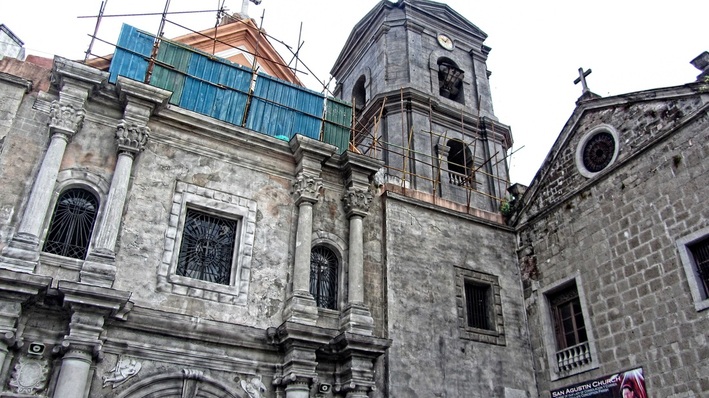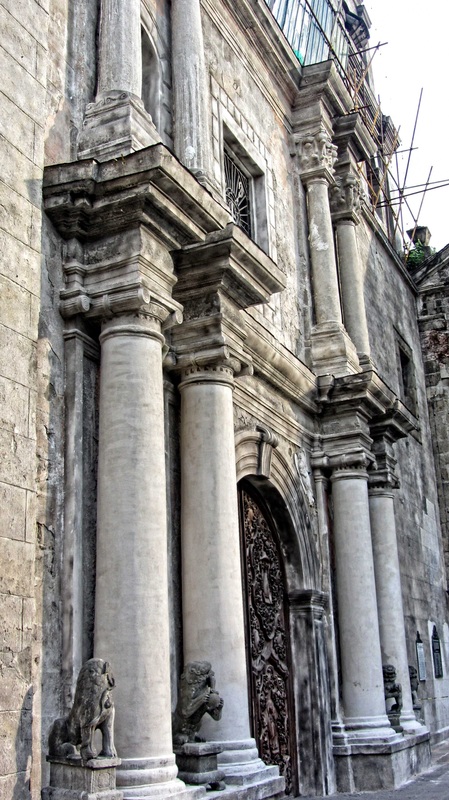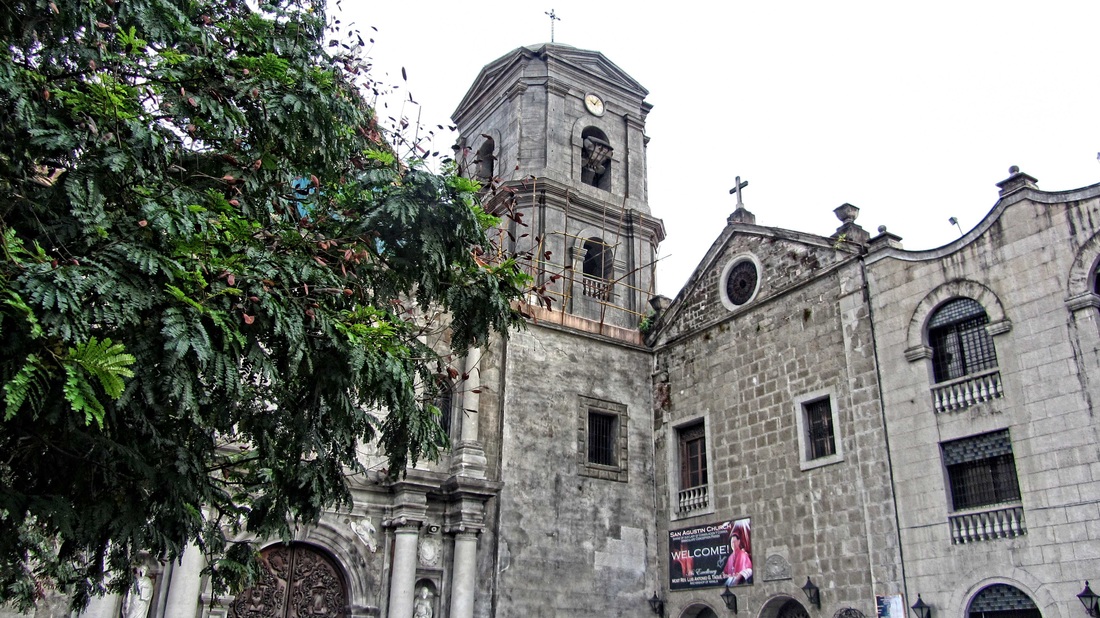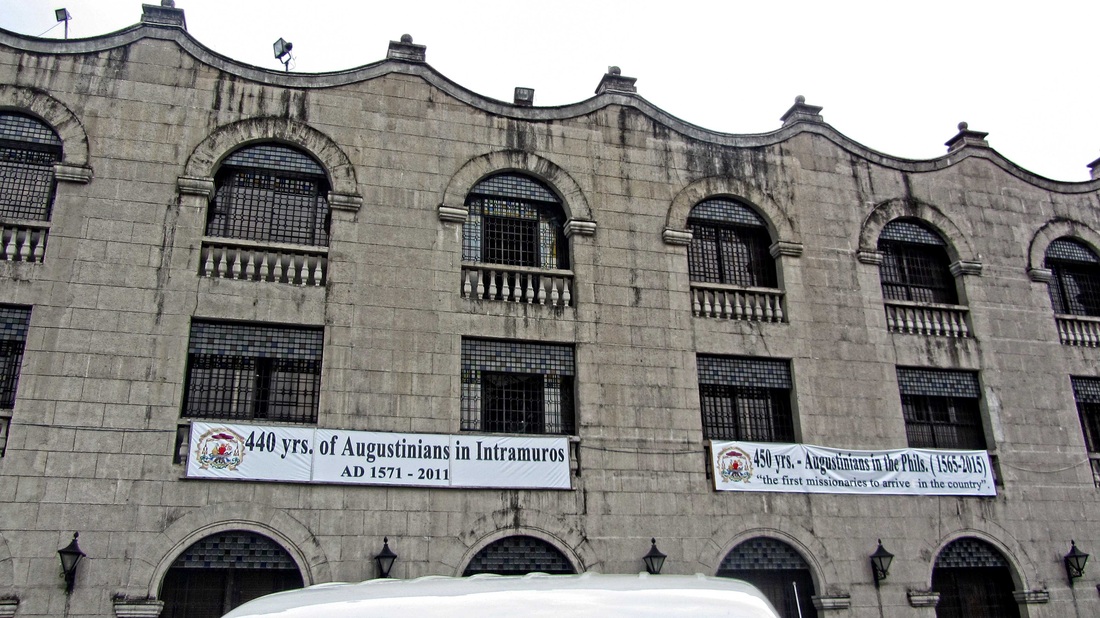Declared as one of the World Heritage Site by UNESCO in 1993, the San Agustin Church in Intramuros, Manila, is the oldest stone church (built in 1589) in the Philippines.
Originally known as "inglesia de San Pablo", the church is being administered by the Order of Saint Agustine (Augustinian Friars). Since the time of its foundation, the devotion to Nuestra Senora dela Consolacion y Cirrea is celebrated every Saturday.
| San Agustin is also the first religious structure constructed by the Spaniards on the island of Luzon. The first church was made of bamboo and nipa and completed in 1571, but during the attempted invasion of Limahong to Manila in December (1574), the church was destroyed by fire. The second church that has been erected was made of wood, but suddenly it was destroyed again by fire in February (1583), the fire started when a candle set ablaze the drapes of the funeral bier during the interment of the Spanish Governor-General Gonzalo Ronquillo de Peñalosa. The present structure is the third Augustinian church erected on the site. The Augustinians decided to rebuild the church using stone, and to construct an adjacent monastery. Construction began in 1586, based on a design by Juan Macías. The structure was built using hewn adobe stones quarried from Meycauayan, Binangonan and San Mateo, Rizal. |
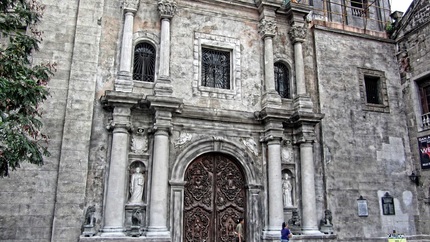
The work proceeded slowly due to the lack of funds and materials, as well as the relative scarcity of stone artisans. The monastery was operational by 1604, and the church was formally declared complete on January 19, 1607, and named St. Paul of Manila.Macías, who had died before the completion of the church, was officially acknowledged by the Augustinians as the builder of the edifice.
San Agustín Church measures 67.15 meters long and 24.93 meters wide. Its elliptical foundation has allowed it to withstand the numerous earthquakes that have destroyed many other Manila churches. It is said that the design was derived from churches built by the Augustinians inMexico. The façade is unassuming and even criticized as "lacking grace and charm", but it has notable baroque touches, especially the ornate carvings on its wooden doors. The church courtyard is graced by several granite sculptures of lions, which had been gifted by Chinese converts to Catholicism.
The church interior is in the form of a Latin cross. The church has 14 side chapels and a trompe-l'œil ceiling painted in 1875 by Italian artists Cesare Alberoni and Giovanni Dibella. Up in the choir loft are hand-carved 17th-century seats of molave, a tropical hardwood.
The church contains the tomb of Spanish conquistadors Miguel López de Legazpi, Juan de Salcedo and Martín de Goiti, as well as several early Spanish Governors-General and archbishops. Their bones are buried in a communal vault near the main altar. The painter Juan Luna, and the statesmen Pedro A. Paterno and Trinidad Pardo de Tavera are among the hundreds of laypersons whose remains are also housed within the church.
San Agustin Church also hosts an image of Our Lady of Consolation (Nuestra Señora de Consolacion y Correa), which was canonically crowned by Manila Archbishop Cardinal Jaime Sin in 2000.
The church interior is in the form of a Latin cross. The church has 14 side chapels and a trompe-l'œil ceiling painted in 1875 by Italian artists Cesare Alberoni and Giovanni Dibella. Up in the choir loft are hand-carved 17th-century seats of molave, a tropical hardwood.
The church contains the tomb of Spanish conquistadors Miguel López de Legazpi, Juan de Salcedo and Martín de Goiti, as well as several early Spanish Governors-General and archbishops. Their bones are buried in a communal vault near the main altar. The painter Juan Luna, and the statesmen Pedro A. Paterno and Trinidad Pardo de Tavera are among the hundreds of laypersons whose remains are also housed within the church.
San Agustin Church also hosts an image of Our Lady of Consolation (Nuestra Señora de Consolacion y Correa), which was canonically crowned by Manila Archbishop Cardinal Jaime Sin in 2000.

